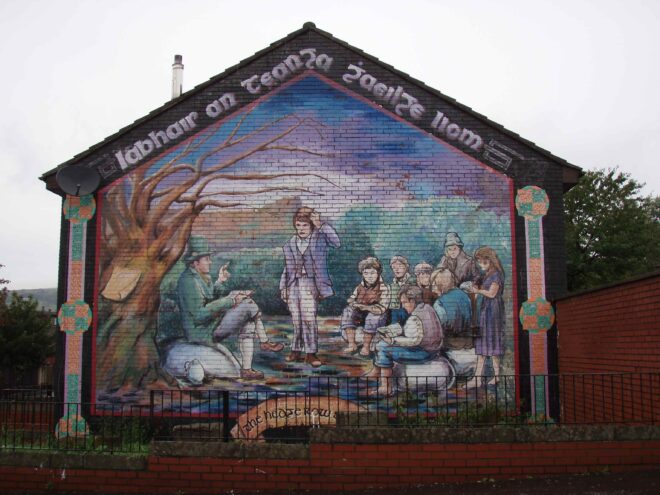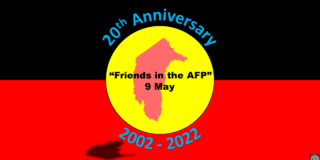
Since the first spoken word humankind has sought to be remembered. From the humblest headstone or scrawl in concrete, to the grandest biographies and conceits, men and women alike have feared to be forgotten. From the whispered tales of peasants to the remnants of life in the rubble, culture endures, stubbornly refusing to be erased. Occasionally, last words carry for hundreds, even thousands of years.
Leaving a mark – the desire for remembrance
Cultures rise on the visions of leaders or fall on the whims of despots, but from the ash-covered ruins of Pompeii to the clandestine Hedge Schools of Ireland, the desire to be remembered transcends conquest and catastrophe. By considering the broader context of a society at the time and examining the institutions that preserve culture, we find that history is not solely the domain of the victor, but belongs to those who defy erasure through defiance and ingenuity. Such subversive resilience that challenges the dominant narrative is well examined from the perspective of Ireland’s Hedge Schools, a cornerstone of Irish cultural survival.
Cultures are lost to the ravages of war and time. Graffiti, be it drawn on a rock face or a wall, is a record of existence. Gifted writing by the ancient Sumerians, humankind carries on a cultural practice that began some 4,000 years ago and was carried on by the Akkadians. The forms and script may have evolved, but writing continues. Sumer’s influence continues to echo through its archaeological wonders including the tale of Gilgamesh and his beloved Enkidu. Culture is expressed in repetition and memory, forming a connection that transcends generations in every dance, song and poem. And whilst not all cultures survive the societal and political shifts, some overcome the odds.
Brehon Ireland
Prior to the fifteenth century, education in Ireland was conducted by bards. Taught in the Irish language, Gaeilge, the bards also taught literature, history and Brehon law, which prevailed from the earliest civilisation in Ireland until the early 17th century. Having been spared the ravages of Roman conquest, Gaeilge, with roots claimed to stretch back to the fall of the Tower of Babel, has survived and thrives into the twenty-first century, despite the promotion of Latin in the seventh century.
Ireland and Irish culture have refused to wither and be forgotten. Subjected to the brutality of British imperialism, the people took education underground in order to preserve their unique culture. The bardic schools exercised a rigorous training program extending to 12 years to become an ollamh, the highest rank of bard. But with the perpetual invasions and decimation of its people, Ireland and her culture began to fracture. Oliver Cromwell’s religious zealotry resulting in his adoption of Puritanism was dire for Catholics, a faith whose hierarchy seemingly threatened Cromwell’s idea of an egalitarian Britain. “Papists” were considered to be politically ambitious and a destabilising force to the young Commonwealth of England following the execution of the Catholic Charles I. As Cromwell assumed the role of Lord Protector of the Commonwealth, he launched an assault on the Irish Catholic Confederation, which had been loyal to the crown.
A devout Puritan, Cromwell could not abide the Pope. The Confederacy welcomed Papal Nuncio Pierfrancesco Scarampi, sent by Pope Urban VIII, and was encouraged to continue the war with England rather than compromise with Cromwell’s Commonwealth. Within a year, Pope Urban’s successor Innocent X, provided substantial financial support, sending another ambassador, Giovanni Battista Rinuccini, who arranged arms and munitions to be sent to the Irish Confederates.
The Commonwealth of England and subjugation of the Irish
Despite Papal support, the Confederacy lasted only a decade and in 1652 following Cromwell’s conquest of Ireland, it was absorbed into the Commonwealth and the Act for the Settlement of Ireland. All land was seized from those who fought for the Confederacy, whilst others lost three-quarters of their land, but given a parcel in Connaught. Catholics experienced little leniency, but Protestants could buy their way to security by paying fines. Consequently, Protestant families retained most landholdings, whilst Catholics found themselves homeless and in poverty. One would wonder that at this point, how could a culture survive?
Cromwell’s hatred for Catholic devotion meant he had no qualms about priests being killed or deported. It is certain that he meant to destroy Catholicism in Ireland and subjugate an entire people. It is also clear that he had no interest of permitting Catholics to live in any degree of comfort or security and had no interest in permitting conversion to the Protestant faith. By 1660 Cromwell was dead, the Commonwealth had collapsed and the monarchy had been restored, but Ireland remained a dependency.
Despise for Cromwell among the Irish has transcended centuries, with Sir Winston Churchill noting:
“Cromwell’s record was a lasting Bane. By an uncompleted process of terror, by an iniquitous land settlement, by the virtual proscription of the Catholic religion, by the bloody deeds already described, he cut new gulfs between the nations and the creeds … the native inhabitants… across three hundred years, have used as their keenest expression of hatred, ‘the Curse of Cromwell on you’.”
In 1695, the Irish Penal Laws were passed. What land that was still owned by Catholics was forfeited and religious freedoms were removed. Catholics unable to hold office, learn a profession, possess weapons or study at a tertiary level. They could not speak their native tongue or play their Irish music. Clearly uncertain that they had effectively deprived Irish Catholics of land ownership, the British parliament passed the 1703 Popery Act, requiring that land be split between a man’s sons under a scheme known as gavelkind. If there were no sons, the land was divided among a man’s daughters. Conversely, Protestants were required to practice primogeniture, conserving large landholdings under a single heir.
A progressively dwindling entitlement for Catholics made even subsistence farming impossible. Consequently, land ownership could be leveraged as a means to force conversion to Protestantism and to break apart Catholic families. Depending on the order of birth, a son who converted could claim a portion of his father’s land, up to the full title for the oldest son. Vast numbers of Irish Catholics became tenant farmers, with the laws preventing them from leasing land for more than 31 years, forcing relocation and breaking community ties. Under such existential pressure it would not have been unexpected for Irish culture to die out and for history to recall little of their trials.
Subversive Resilience: Education in the Face of Aggression
Whilst the bardic schools were officially disbanded under Cromwell, and the establishment of new schools was prohibited, across Ireland the poorest people found a means to pass on their culture and educate youth. Classes were initially conducted beside or deep in hedges separating roads and fields, with a lookout posted as precaution. Later, as the codes were relaxed, classes were held in farmhouses or barns, collectively known as Hedge Schools. Led by a well-educated bard or teacher, several generations of Irish Catholic and Presbyterian peasants received education despite the efforts to the contrary by British imperialists. Often itinerant schoolmasters, who were generally poor themselves, were paid in coin or trade, perhaps with shelter or food.
An 1826 survey found that over 70% of the 500,000 children educated in 1824 had been educated at a Hedge School. Although the quality and breadth of education varied with the skill of the schoolmaster and the number of available teachers at any one school, it is no exaggeration to say that Irish culture and history were preserved by this resistance to British thuggery through a defiance that extended over several generations.
The Hedge Schools provided a social and cultural lifeline, building community cohesion between families and districts as the schoolmasters travelled. The very act of learning in secret was both bold and empowering. Not only did it teach the paupers to read and write, but it built a sense of individualism that would underpin the revolutionary natures of the country’s first independence volunteers.
Turning the Tide: Enlightenment and Emancipation
Facing revolution in the North American colonies and following the death of the Catholic Pretender James Stuart who had been denied the throne through the 1701 Act of Settlement, the British parliament passed the Papists Act of 1778. The act alleviated some restrictions on Catholics, notably permitting them to purchase land if they took an oath of allegiance to the crown. By 1829, the Enlightenment and humanist influences saw the parliament pass the Catholic Relief Act. As the Enlightenment and humanist influences came to prominence, Catholics were permitted to vote and hold public office. Hedge Schools continued, in some remote areas until the early 1890s.
Over a period of just over 200 years, it was the Hedge Schools that preserved Irish culture and history for subsequent generations and educated entire families. The efforts of the British to force cultural and social change through punitive laws had failed. Twenty-six of Ireland’s counties achieved independence in May 1921 as the Irish Free State through the combined efforts of both Catholic and Protestant men and women. Six of the nine counties of the ancient province of Ulster remained a part of the United Kingdom. Conscious of their history and despite “The Troubles” in Northern Ireland, the Irish have strived to overcome centuries of sectarian hatred and political abuse. Many in the North consider themselves dual citizens of both Ireland and Britain. Recognition Of Ireland and of Gaeilge by the European Union is proof that not only can culture survive centuries of trauma, but that it can flourish and reconnect with its diaspora.
Conclusion: Hope for others
The Irish experience offers hope for other cultures threatened with extinction, including the people of Gaza. The oral traditions of the Palestinians may transcend decimation via digital archives and testimonials, disseminating a legacy for future generations to carry on and rebuild. It was the decentralised, community driven model of the Irish Hedge Schools that were its strength, and just as Ireland’s diaspora has embraced recognition and amity with it’s former foe, so may Palestinians.
Education, however it is delivered, is a tool of survival, preserving the soul of culture and community in periods of ease or trial. The legacy of the Irish Hedge Schools is in every descendant, every Gaeilge speaker and every tale. It is in the stories that are passed from mother to child, the dance taught by father to son, the songs sung in joy and in sorrow. And the Hedge Schools themselves are now woven into the history and culture or Ireland itself. Every act of subversive resilience that preserves a culture is a statement of value and remembrance. The victors may write their histories, but the subversive voices of the resilient are almost impossible to silence. They carry down through generations to rebuild, reconnect and challenge the dominant account. In doing so they correct the historical record so that we may all learn from the truth.

